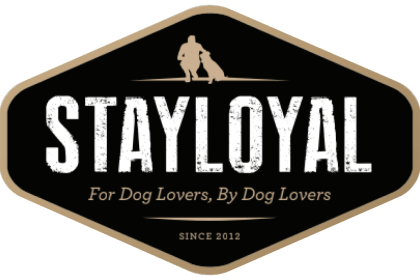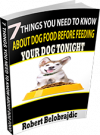Canine Christmas Caveats

‘Twas the morning after Christmas, when all over the floor,
There was dog puke and dog poop, more and more!
We’d handed out scraps and all sorts of pies,
But who could deny our dog’s pleading eyes?
A ham bone here, a turkey neck there,
How about some drippings to add to the fare?
And oh, here’s some candy, and eggnog too,
No wonder this carpet is covered in goo!
Okay, we’re no poets here but we’ve cleaned up our share of carpets. Especially after we’ve shared our holiday feast with the best of intentions. Christmas tops the list when it comes to making dogs sick from eating too much of a good thing! Here’s a list of the top edibles that can ruin your dog’s Christmas–and yours too!
- A few leftovers won’t hurt. But a bowl of turkey skin and ham fat is asking for trouble. Even a few strips may be too much for a small dog. If you’re lucky it will just be in the form of vomit and diarrhea. If you’re not it will be in the form of a very sick dog suffering from pancreatitis, an emergency trip to the veterinarian and a big vet bill! Hold the fat!
- That box of chocolates you put in the stocking? Your dog does have a good nose, you know. Did you really think he’d ignore it while the rest of you went out? If your dog snarfs down a few chocolate chip cookies, don’t freak out. It’s not like it’s strychnine. But if he absconds with a bar of dark chocolate, yes, you have cause to worry. The culprit is the theobromine in chocolate. Depending on dose, it can cause vomiting, diarrhea, restlessness, fever, seizures, coma and death. The toxic dose for dogs is 100 mg/kg. Dark chocolate contains over 14 mg/gram, so a 140 gram dark chocolate bar can be life-threatening to a 20kg dog. Different types of chocolate contain different amounts of theobromine. Milk chocolate has about 1.5 mg of theobromine per gram, semisweet chocolate about 5.4 mg per gram, and baker’s chocolate about 14 mg per gram. White chocolate has very little.
- Worse than chocolate when it comes to candy, though, is anything sweetened with xylitol, an artificial sweetener found in some gum, candy, peanut butters and even toothpaste. It can cause hypoglycemia or liver failure. The dog’s pancreas confuses xylitol with real sugar and releases insulin to store it. The insulin removes real sugar from the bloodstream and the dog can become weak, have tremors and even seizures starting within 30 minutes of eating it. Hypoglycemia can be caused by about 1 gram per kilogram of body weight. A stick of gum contains about 0.4 grams, so a 5kg dog could become sick from one stick. Liver damage requires about 5 grams per kg of body weight, so a 5kg dog could ingest a potentially lethal amount if he ate 10 sticks of gum. Guests with sugarless gum in their unattended purse can be a source of inadvertent poisoning.
- Raisins are toxic to some, but not all, dogs. Just 20 grams of grapes or 3 grams of raisins per kg of body weight can cause kidney failure in these dogs. Your dog may be perfectly fine after eating them—or not. Just keep them out of reach! A few raisins in a plum pudding should be fine, but again, does your dog really need plum pudding? And fruit cake will kill anyone, dog or human, raisins or not, so just give it to the next person.
- Macadamia nuts won’t kill your dog, but they can make him pretty sick, with symptoms including severe lethargy, increased body temperature, vomiting, tremors, joint stiffness, and loss of limb (especially hind limb) control for the next 48 hours. Nobody knows why, but these nuts affect the dog’s nerve functions, especially those involved in movement.
- Nutmeg contains a toxin called myristicin and in large amounts can cause disorientation, increased heart rate, and possibly seizures. But in amounts used in recipes, it’s perfectly safe. Just don’t leave the container sitting around.
- Alcohol can make dogs drunk and can even kill them. Dogs are far more sensitive to it than people are, and not just because they’re smaller. Dogs can be pretty good at sneaking spiked eggnog or White Russians or even rum balls!
- Unbaked bread dough with yeast can cause problems. If the dog eats it, the yeast can rapidly expand in the warm moist environment of the dog’s stomach. It can expand so much it cuts off blood supply to the stomach wall, killing that tissue. It can press on the diaphragm, making breathing difficult. And the multiplying yeast produces alcohol that the dog absorbs into its bloodstream, resulting in intoxication—even death.
If your dog eats forbidden food, you can induce vomiting by making him swallow hydrogen peroxide. But what kind of a Christmas present is that? Just keep the food out of reach, keep an eye on your guests, and dole out the treats carefully! Or get a good carpet cleaner…








